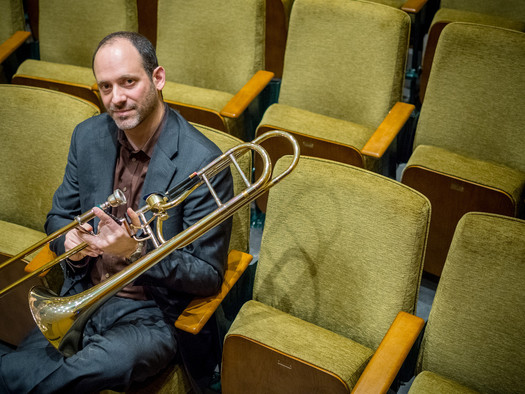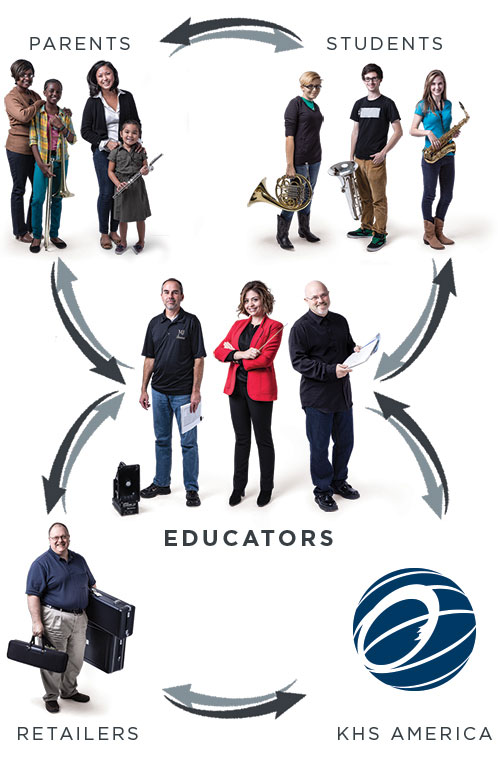Most parents and students start the summer with the best intentions as far as instrumental music practice is concerned. Some families choose to rent their instrument for the summer months and not return it to the store/school. Some even buy a new instrument at the end of the school year as a gift to their child, hoping it serves as a motivational tool for the upcoming summer months. And many families return the rental instrument and take the entire summer off playing.
Either way, school is about to start — and quitting musical studies should not be an option. Most students quit at the end of the summer, especially if they think they have lost their skills. Picking up an instrument for the first time after a long layoff can be so frustrating that a student will not want to continue into the next school year.
It doesn’t need to be this way!
It’s easy to get your child back into playing shape so that they start the school year off with confidence and excitement to make music all over again.
Here are some tips to go from “out-of-shape” to “playing ready” in no time:
- Take the instrument out of the case. Start with the smallest task and simply take it out of the case and put it together. Lubricate any corks, slides, and keys and inspect the instrument for any defects that may need attention by a professional. Spend some time watching a YouTube video on cleaning the instrument and putting it together with your child. There’s no need to make a sound on the instrument on this day, but if your child chooses to, that’s great! Ideally, you should find a safe place to leave the instrument out of the case. An instrument stand is an incredible invention that allows musicians to safely leave the instrument out and ready to play at all times. Sometimes the hardest part of practicing is simply taking the instrument out of the case!
- Listen to a great performance on the instrument. The internet is a beautiful place when it comes to finding great performances to watch or listen to. Take 5 minutes and watch a great performance with your child of a musician who plays the instrument they are studying. These listening sessions help to fill your child’s brain with beautiful sounds that — over time — they will attempt to replicate. Students need an aural concept of what they are trying to accomplish — these listening sessions are crucial to that concept. Over the course of a week or so, you can make a playlist of great pieces that you can play in the morning while kids are getting ready for school.
- Make some sounds (any sounds) on mouthpieces or instrument parts. Insisting that your child practice “correctly” on day 1 can be extremely detrimental to their confidence, and certainly won’t do much to make practicing fun. Have your child play for 5-10 minutes on their mouthpiece, head joint, or full instrument, and let them play whatever they like. The easier the music, the better for now. They should end this tiny session feeling good about themselves and realizing that they haven’t completely forgotten how to play their instrument over the summer.
- Take breaks. Playing a musical instrument is a physical activity and with getting back in shape, adequate rest is important. Muscle conditioning is a gradual process and when muscles tingle it is normal, but it can also be a sign to take a break – for a few minutes, or even for a few hours.
- Just play. The best way to get back in shape and into the groove of playing a musical instrument is to simply pick up the instrument and play. Play easy songs and songs that you like; play with friends; play along with recordings; record yourself playing and listen back to it with the family. Create any opportunity that helps the child connect with the instrument again for just a few minutes a day, and they will be back playing in no time.
- Incorporate playing into “the routine”. Whatever your morning or evening routine is for your child, add playing an instrument to it. It makes for a nice break between tedious homework, and it won’t take long for your child to get used to it being part of the routine. There is no need for parents to stress out more by adding instrumental instruction to their child’s day — start with adding it to the routine and see how their motivation shifts from extrinsic to intrinsic rather quickly.
An enormous percentage of students quit playing their instrument over the summer months. All young people experience learning losses when they do not engage in educational activities during the summer, especially in reading and math. Music is no different, except that most students have the option to quit musical instruction, so often they choose to do just that. If parents treat music as a core subject and don’t let their child quit over the summer, they will find the rewards of a lifetime immersion in the arts well worth the investment.
About the Author
A GRAMMY® nominated music educator, ANTHONY MAZZOCCHI has performed as a trombonist with the Los Angeles Philharmonic, New Jersey Symphony, San Diego Symphony, San Diego Opera, Riverside Symphony, Key West Symphony, in various Broadway shows and numerous recordings and movie soundtracks. Tony has served as faculty or as a frequent guest lecturer at The Juilliard School, Manhattan School of Music, New York University, and Mannes College of Music. He has taught grades 4-college and has served as a school district administrator of fine and performing arts. Tony has been a consultant for arts organizations throughout the NY/NJ area. He is currently Associate Director of the John J. Cali School of Music at Montclair State University in New Jersey and Co-Executive Director of the Kinhaven Summer Music School in Weston, Vermont with his wife, Deborah. To read more from this author, please see his book, The Music Parents’ Guide : A Survival Kit for the New Music Parent. It is available at http://www.amazon.com/dp/B00U6S974G.
The content of this Blog article or Banded Story is the intellectual property of the author(s) and cannot be duplicated without the permission of KHS America and/or the author(s). Standard copyright rules apply.



 We look forward to the evolution of this exciting program, and welcome feedback on how we can further enhance the work that you do in music education.
We are excited to offer your program the opportunity to join the KHS America Academic Alliance today.
We look forward to the evolution of this exciting program, and welcome feedback on how we can further enhance the work that you do in music education.
We are excited to offer your program the opportunity to join the KHS America Academic Alliance today.